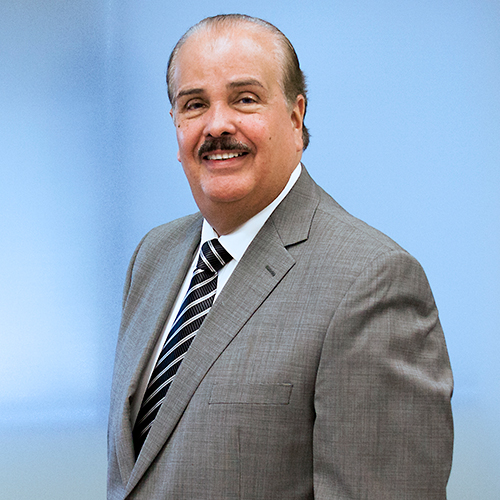When Mardi Galdamez was a small child, his family fled the civil war in El Salvador and moved to a low-income neighborhood of Los Angeles, where his mother worked two jobs to support him and his older sister as they grew up. The chances of making it to the C-suite in corporate America are slim when you’re an immigrant coming from a single-parent home, but Galdamez had the benefit of his mother’s work ethic as an example, and as a result is today the chief technology officer at Elite Marketing Group (EMG), one of the top full-service experiential marketing agencies in the country.
Galdamez remembers first being introduced to information technology (IT) while working as a waiter in New York at the age of 19. It was the mid-1990s, and every restaurant—from large chains to fine dining—was installing computer systems. The system he was trained to operate could keep track of orders, billing, and sales, but it would often break down, causing havoc in the restaurant.
Tech support would usually take hours, if not days, so Galdamez started tinkering with the computer system himself to try and figure out how to get it working again. It was his first exposure to networked business computing systems, and he quickly learned that he had a knack for fixing them. It would become his life’s work; Galdamez decided to go to school to pursue formal IT training while still working at the restaurant at night.
After graduating at the top of his class, a medical center recruiter called Galdamez with an offer for a position in the IT-systems management sector, where he learned a variety of new systems and even became the primary support administrator for the dialysis servers. After eight years and multiple promotions under the heat of life-or-death pressures, Galdamez was ready to take on a new challenge and set his sights on marketing IT.
Galdamez joined EMG in 2004, bringing IT expertise and a “failure is not an option” mentality that he picked up while working in medicine. The marketing agency, however, offered him something that his prior field could not: a chance to flex his creative muscles.
At EMG, Galdamez is able to combine his love of technology, travel, and creativity to create growth for the company. “My job enables me to try the newest and latest gadgets, apps, platforms, and media,” he says.
“Technology is always evolving, which makes it exciting and challenging at the same time, but I love it all. I also love the ability to create, which is a rare opportunity for an IT professional. Marketing is creative, and the kind of IT we do is creative.
“The majority of IT pros spend most of their time keeping the trains running on time. I get to spend all my time in inventing tractor beams and spaceships and jetpacks. At least, that’s how I feel sometimes.”
Galdamez’s job, in his words, is to “lead the team that drives this innovation.” Because EMG lives on the front lines of new technology, “maintaining full command of what’s possible now and what will be possible in the future” is a major part of his secret to success.
“So much of IT is about keeping old technology from breaking,” Galdamez says. “My greatest skill is to be able to smash the old and invent the new—always doing things faster and better.” This drive for perpetual improvement at EMG has resulted in record growth. The agency started as a small college marketing agency focused on alternative media. It later grew into the leader it is today, with Fortune 500 clients like Delta Air Lines, Citi, and US Bank.
As a long-standing leader in data capturing, sponsorship, and staffing, EMG now utilizes creative applications of technology to create unique and relevant experiences that inspire consumer action.
Galdamez is largely responsible for identifying the strategic value of technology to best benefit clients’ needs. His creativity also allows him to find and develop more homegrown solutions for internal and client services.
“I’m not afraid of change,” he says. “In fact, I’m a huge cheerleader for change. In order to make an impact, it has to be better. In order to be better, it needs to be different. Change is the only way to achieve high-impact marketing, and I believe the ability to make that happen in an organic way helps me thrive in this environment.”
Galdamez did exactly that with a project for Bank of America and Major League Baseball (MLB). For the MLB FanFest All-Star Game and World Series, which is the largest interactive baseball event in the world, he and his team created a baseball trivia application that simulated first base through home plate. Fans would have the opportunity to stop at each “base” to answer questions on an iPad, all the way to home plate, where they would have the chance to win prizes. “It was a thrill to attend these games and watch how much fun fans were having with the app,” he says.
The future of experiential marketing, Galdamez believes, will be in augmented reality. Consumers will be able to experience virtual-reality objects and events, but see them floating around them in the real world. He points to future products now in development, including Microsoft’s HoloLens or Magic Leap’s mixed-reality technology, as experiential marketing’s major upcoming tools.
“I’m a huge cheerleader for change. In order to make an impact, it has to be better. In order to be better, it needs to be different. Change is the only way to achieve high-impact marketing.”
The rise of augmented reality is just one example of how drastically tech has changed since Galdamez became CTO. Smartphones fundamentally redefined marketing strategy and enabled connectivity and custom apps. Mobile also opened the floodgates to social media, which made experiential marketing campaigns globally viral.
A focus on social media comes with pros and cons; it empowers the consumer to help make or break a marketing campaign. Galdamez finds campaigns are more successful when they focus on the consumer more than the message. But targeting potential consumers is a completely different game now from when he started at EMG.
One concept that fascinates Galdamez is the “social machine,” which is a digital environment driven by a social network act (a “like” on Facebook or a trending Twitter hashtag). “It is important that marketers continuously update their technology capabilities and continue to evolve,” he says.
As a team leader charged with always staying on top of the latest creative integrations of technology into marketing campaigns, Galdamez knows his role carries a great deal of responsibility—“an entire company and all its clients are depending on me to make sure the technology works,” he says—but he finds comfort in the sense of accomplishment that comes with it.
“I’ve always felt at ease with technology,” he says. “But over my career, I’ve also learned to lead teams, manage budgets, make presentations, and think creatively about the nexus between marketing and technology.”

